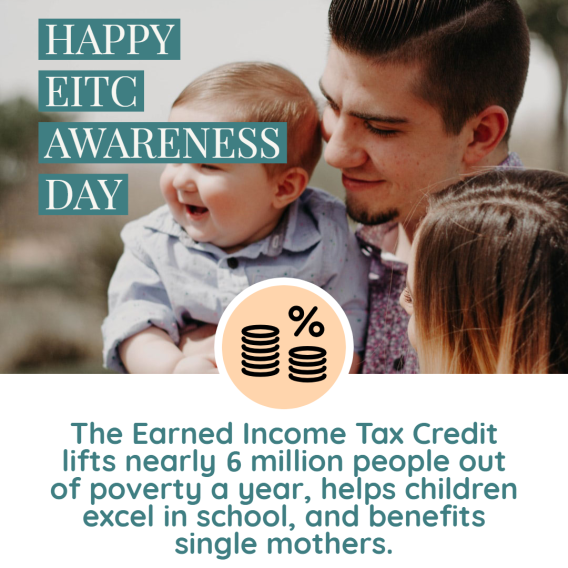The Child and Dependent Care Credit is a federal tax benefit that helps families pay expenses for child care needed to work or to look for work. The credit also is available to families that must pay for the care of an incapacitated spouse or an adult dependent who is unable to physically or mentally take care of themselves.
Eligibility
Your family can claim this credit if you:
- Paid for care in 2023 for a qualifying child under age 13 claimed as a dependent*, or a spouse or dependent not able to care for themselves, who lived with your family for more than half of the year. AND
- Needed the child or dependent care to work or look for work. (In a two-parent family, both spouses must have needed the child or dependent care to work or to look for work unless one spouse was a full-time student or unable to care for themselves.) AND
- Spent less for dependent care during 2023 than your total income for the year. If taxpayers are married and filing a joint tax return, they must have paid less for care than the income of the spouse with the lowest earnings. There are special rules for calculating the income of a spouse who was a full-time student or disabled.
Types of care that qualify for this credit:
- Any kind of child or dependent care can qualify, including care at a center, a family day care home or a church, vacation day camps, or care provided by a neighbor or a relative (except if provided by a spouse, a dependent, or a child of the tax filer under 19).
- If a family receives free child care, such as from a state-subsidized program, that care cannot be used to qualify for the credit. Copayments by families for subsidized care, however, are an eligible expense.
The EITC and CTC do not affect a family’s eligibility for this credit. Claiming all three credits, when possible, could mean even more money back from the IRS.
* In general, the credit can only be claimed if a child is claimed as a tax dependent, but there are special rules for children of divorced or separated parents. See the IRS Publication 503, Child and Dependent Care Expenses, “Child of divorced or separated parents or parents living apart” section.

Benefits
The size of the Child and Dependent Care Credit depends on the number of children or dependents in care, your family’s income, and the amount your family paid for care during the year.
| Number of Children | Amount of Qualified Expenses | Adjusted Gross Income (AGI) | Maximum Percentage of Expenses | Maximum Credit |
| 1 | Up to $3,000 | Less than $15,000 | 35% | $1,050 |
| More than $43,000 | 20% | $600 | ||
| 2 | Up to $6,000 | Less than $15,000 | 35% | $2,100 |
| More than $43,000 | 20% | $1,200 |
Example: Ms. Lewis has one child and earned $26,000 in 2023. Ms. Lewis spent $3,000 during the year on child care. She owes $520 in federal income tax. Ms. Lewis is eligible for a Child and Dependent Care Credit worth up to 29 percent of what she spent on care, or up to $870. Her Child and Dependent Care Credit eliminates her tax liability. (She also qualifies for other tax benefits: she is eligible for a CTC refund worth $2,000 and her EITC is worth $3,281.
Claiming the Credit
Families must file a federal income tax return and submit Form 2441, “Child and Dependent Care Expenses.” You will need to submit the provider’s name, address, and Taxpayer Identification number (TIN). To complete the tax form, you will also need to know how much you spent on care in 2023. You can refer to receipts or bank account statements depending on how you paid for the care.
Twenty-five states, including the District of Columbia, have state child and dependent care credits. Of these 25 states, 15 states provide a refundable credit: Arkansas, Colorado, District of Columbia, Hawaii, Iowa, Louisiana, Maine, Maryland, Minnesota, Nebraska, New Jersey, New Mexico, New York, Oregon, and Vermont. In these states, low-wage earners that don’t owe income tax can still receive a refund.
Four states provide a child and dependent care expenses tax deduction, which can lower your taxable income. The four states are: Idaho, Maryland, Montana, and Virginia.
For more information, contact your state department of revenue.






